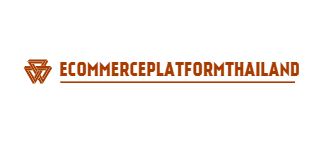In today’s rapidly evolving global landscape, workplace diversity has become more than just a buzzword; it’s a fundamental aspect of organizational success. As companies strive to attract and retain top talent from diverse backgrounds, there is a need to create cultural safety in the workplace where all employees feel balanced and satisfied.
Characteristics of a Robust Safety Culture in the Workplace
The majority of employees express higher satisfaction (82%) and increased productivity (79%) in workplaces characterized by a robust safety culture. This highlights the correlation between a strong safety culture and positive employee experiences, emphasizing the importance of prioritizing safety to enhance both satisfaction and productivity in the workplace.
Below are key attributes defining a robust safety culture in the workplace:
Leadership Commitment
Leadership commitment to safety is the cornerstone of a robust safety culture. When leaders prioritize safety as a core value and demonstrate their commitment through words and actions, employees are more likely to follow suit and prioritize safety in their daily activities.
Visible leadership involvement in safety initiatives, regular communication about safety expectations, and allocation of resources for safety training and equipment are key indicators of strong leadership commitment to safety.
Employee Involvement
Involving employees in safety-related decisions and initiatives is essential for building a robust safety culture. When employees feel empowered to contribute their ideas, insights, and concerns about safety, they become active participants in creating a safer work environment.
Encourage employees to report hazards, near misses, and safety concerns and provide avenues for them to participate in safety committees, conduct safety inspections, and contribute to safety improvement projects.
Clear Communication
Clear and effective communication is fundamental to a robust safety culture. Employees should receive regular and consistent safety training, information, and updates to ensure they are aware of safety procedures, protocols, and expectations.
Encourage open dialogue about safety issues and concerns, provide feedback and guidance on safety performance, and recognize and celebrate safety achievements to reinforce the importance of cultural safety in the workplace.
Hazard Identification and Risk Management
Proactive hazard identification and risk management are key components of a robust safety culture. Encourage employees to identify potential hazards and risks in their work environment and take appropriate measures to mitigate them.
Implement a systematic approach to hazard identification and risk assessment, conduct regular safety inspections and audits, and prioritize actions to control and eliminate hazards to prevent accidents and injuries.
►►►► Please visit our products: Magento POS, BigCommerce POS, Shopify POS, Woocommerce POS, NetSuite POS, Mobile POS, White label POS, Reseller POS, POS System for Retail and Commercetools POS
Continuous Improvement
A commitment to continuous improvement is essential for sustaining a robust safety culture over time. Encourage employees to seek opportunities for learning and development, identify areas for improvement, and implement corrective actions to address safety gaps.
Regularly evaluate safety performance, review incident reports and near-miss data, and implement lessons learned to prevent future incidents and enhance safety practices and procedures.
⇒ Watch more: Learning Business Analysis: Guide for beginners
The Importance Of Employee Involvement For Cultural Safety In The Workplace
- Fostering Diversity of Perspectives: Employee involvement encourages the sharing of diverse perspectives, experiences, and insights, which are invaluable for understanding and addressing cultural safety issues in the workplace. Organizations can gain a deeper understanding of the unique challenges and barriers that individuals may face and develop more effective strategies for promoting inclusivity and respect.
- Empowering Ownership and Accountability: Organizations demonstrate their commitment to valuing diverse perspectives and fostering a culture of inclusion and equity. This sense of ownership motivates employees to actively participate in promoting cultural safety and hold themselves and others accountable for upholding inclusive practices and behaviors.
- Enhancing Cultural Competence and Sensitivity: Employee involvement provides valuable opportunities for education, learning, and growth in cultural competence and sensitivity. Through participation in diversity training, cultural awareness workshops, and cross-cultural dialogue, employees can develop the knowledge, skills, and awareness needed to navigate cultural differences respectfully and effectively.
- Building Trust and Collaboration: Employee involvement fosters trust, transparency, and collaboration between employees and organizational leadership. When employees feel heard, valued, and respected, they are more likely to trust in the organization’s commitment to cultural safety and actively engage in efforts to promote inclusivity and respect.
- Driving Organizational Change and Innovation: Employee involvement catalyzes driving organizational change and innovation in promoting cultural safety. When employees are empowered to contribute their ideas, suggestions, and feedback, organizations can identify areas for improvement, implement meaningful changes, and foster a culture of innovation and continuous improvement.
Best Practices In Empowering Employees For Cultural Safety In The Workplace
Modify Your Company’s Culture
Cultural safety begins with a leadership commitment to diversity, equity, and inclusion (DEI). Company policies, practices, and values should reflect a genuine commitment to cultural safety.
This may involve revising hiring practices to promote diversity, providing cultural sensitivity training for all employees, and creating affinity groups or employee resource groups to support underrepresented communities.
Update Technology
Technology can play a significant role in promoting cultural safety in the workplace. Implementing inclusive technologies, such as language translation tools or accessibility features, ensures that all employees can fully participate and contribute regardless of their cultural or linguistic background. Investing in collaboration tools that facilitate remote work can accommodate employees from different cultural backgrounds and time zones.
Engage Through Workplace Safety Awareness Training
Conduct regular training sessions on cultural safety and unconscious bias for all employees, including managers and executives. These sessions should focus on increasing awareness of different cultural norms, communication styles, and perspectives.
By fostering empathy and understanding, employees can navigate cultural differences more effectively and create a more inclusive environment.
⇒ Watch more: Data Analyst Salary in Vietnam: A Comprehensive Overview
Open Communication Channels
Encourage open and honest communication among employees by creating safe spaces for dialogue. Implement anonymous feedback mechanisms or suggestion boxes where employees can voice concerns or share ideas without fear of retribution.
Additionally, regular check-ins should be established between managers and their teams to address any cultural misunderstandings or conflicts proactively.
Recognition and Rewards
Acknowledge and celebrate diversity through recognition and rewards programs. Highlight employees who demonstrate cultural sensitivity, promote inclusivity, or go above and beyond to create a culturally safe environment. By publicly recognizing these efforts, you reinforce the importance of cultural safety and encourage others to follow suit.
Conclusion
Cultivating cultural safety in the workplace isn’t just a moral imperative—it’s a strategic advantage. By empowering employees to bring their authentic selves to work, organizations unlock the full potential of their diverse talent pool, driving innovation, creativity, and, ultimately, business success.
When it comes to prioritizing workplace cultural safety, SmartOSC shines as an indispensable reference. With its commitment to fostering a supportive and inclusive environment, SmartOSC sets a standard for organizations seeking to create a workplace where every individual feels valued and respected. Discover SmartOSC career prospects for those seeking IT jobs in Vietnam.
Source: https://careers.smartosc.com/en/empowering-employees-cultivating-cultural-safety-in-the-workplace/
►►►► Our related services: low code platforms, cloud networking, adobe marketing cloud, IT jobs in Vietnam, partner strategy for ai, digital customer experience strategy, digital transformation, core banking platforms, agentic ai companies, phần mềm quản lý doanh nghiêp, nền tảng quản trị doanh nghiệp, phần mềm nhân sự, phần mềm chấm công, phần mềm tính lương, phần mềm KPI, phần mềm OKR, Phần mềm quản lý dự án, App chấm công, Cách tính lương, Ftrip Viet Nam, vietnam itinerary 2 weeks, north vietnam 2 week itinerary, northern vietnam 2 week itinerary, vietnam luxury tours, custom travel itinerary, best tour operators in vietnam, Vietnam Photography Tour, Photography Tour Guide Viet Nam

